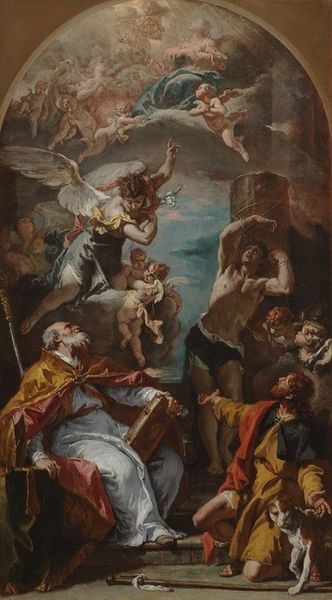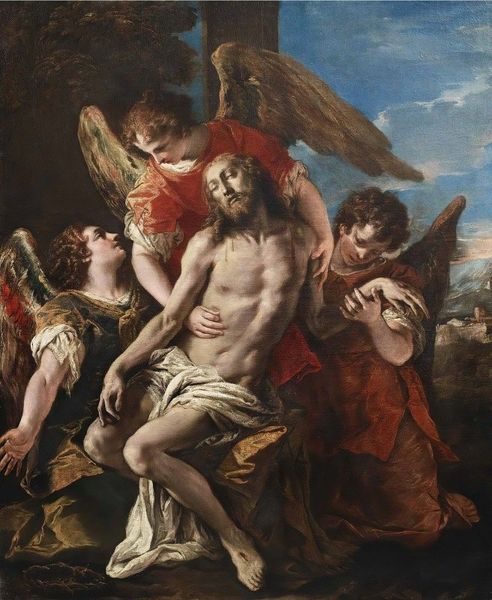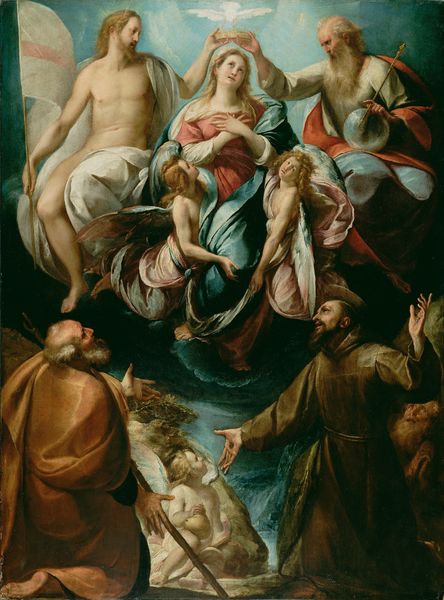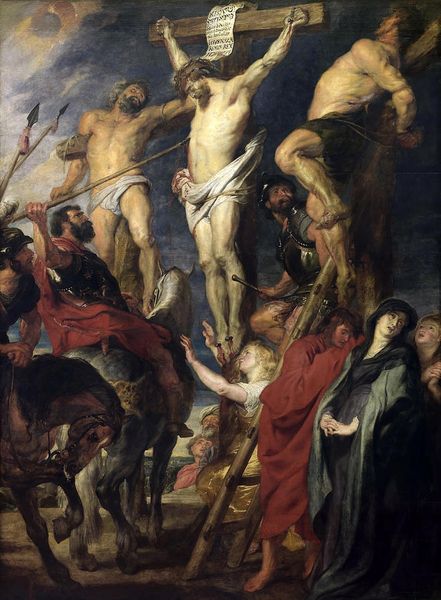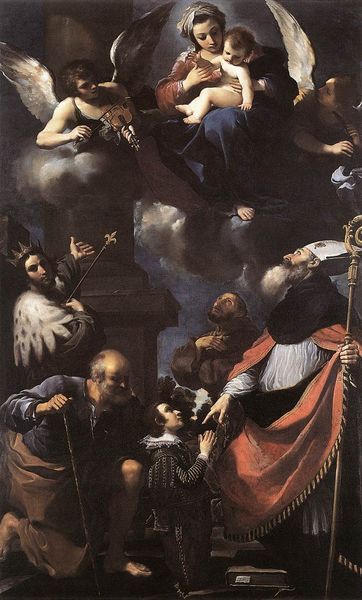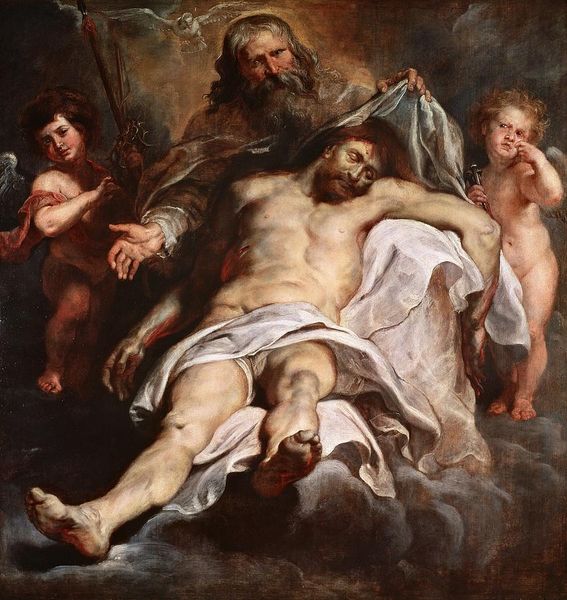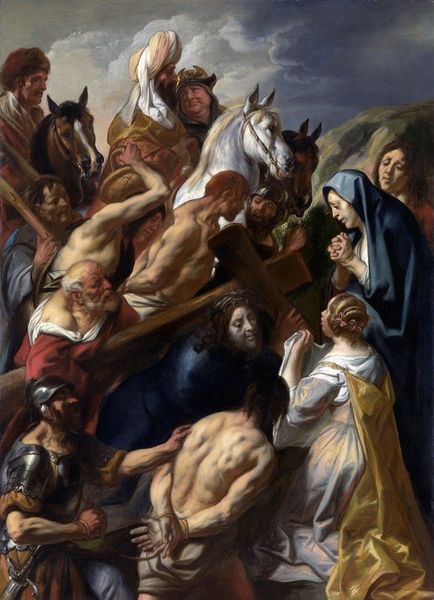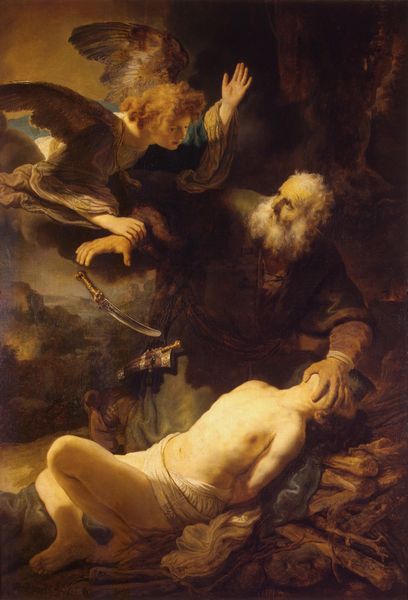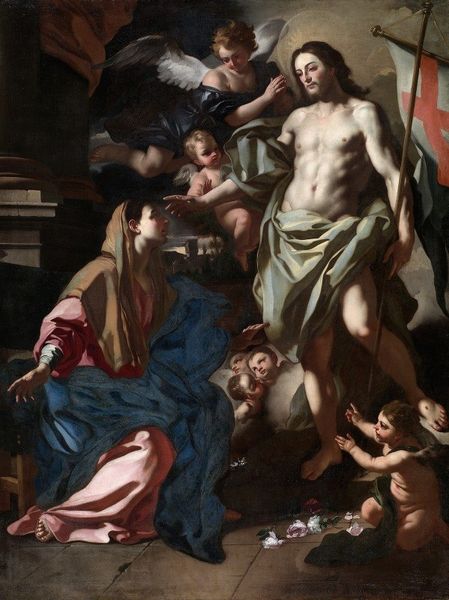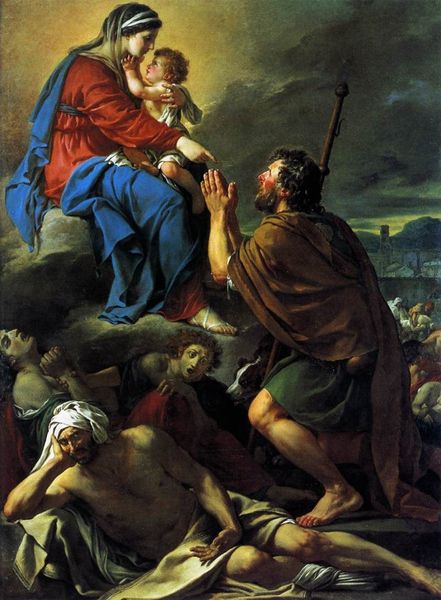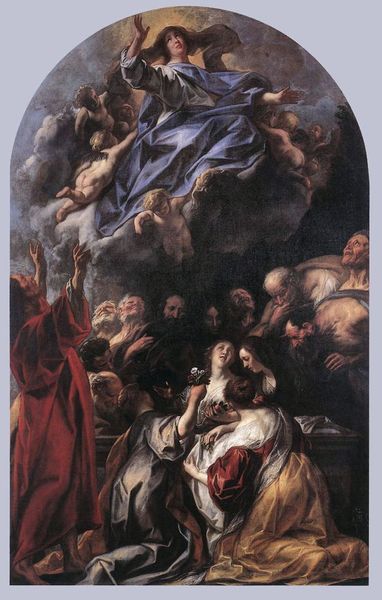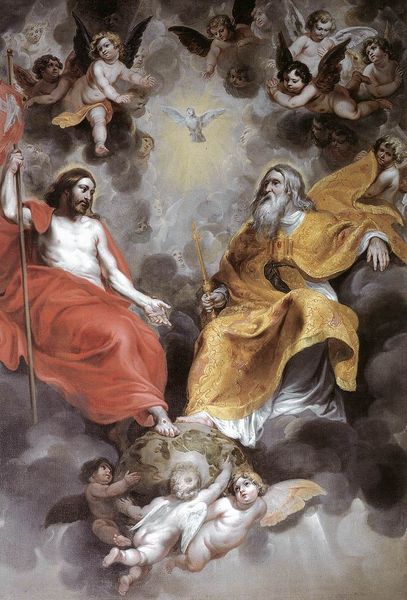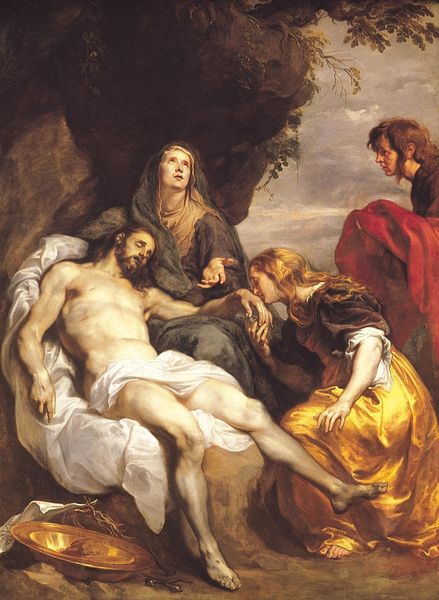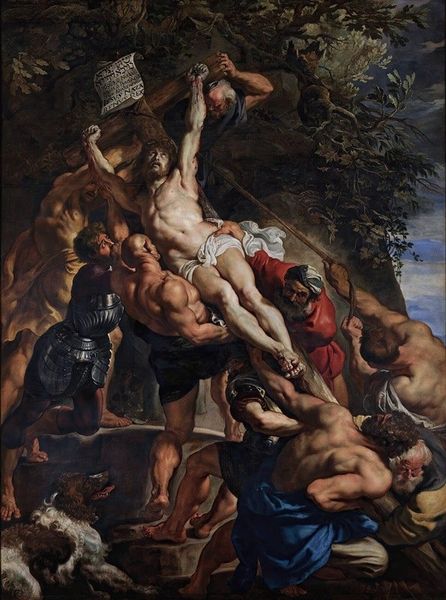
The Apotheosis of Saint Jerome with Saint Peter of Alcántara and an Unidentified Franciscan 1725
0:00
0:00
oil-paint
#
portrait
#
baroque
#
oil-paint
#
figuration
#
oil painting
#
history-painting
Dimensions: 275 x 143 cm
Copyright: Public domain
Curator: Here we have Giambattista Pittoni’s "The Apotheosis of Saint Jerome with Saint Peter of Alcántara and an Unidentified Franciscan," painted in 1725. It currently resides at the Scottish National Gallery in Edinburgh. Editor: It's…dramatic. The light is incredible. You see these ethereal beings floating, draped fabrics… I mean, the artist has truly manipulated paint here! Curator: Pittoni was a prominent figure in the Venetian Rococo movement. Think of this as an exquisite specimen for thinking about the social function of religious art at the time. The very construction of this painting and its narrative are entwined with complex themes of divine transcendence and power dynamics within the Church. Editor: The staging is remarkable, almost theatrical. But I’m curious about the support. It’s an oil painting, of course, but on what was it painted? Was it a simple weave, or was there some inherent complexity in the construction of that canvas that we should know about? Curator: The canvas certainly plays a material role but I would draw your attention to the subjects presented. There is so much tension created here through gendered and political readings of the composition, even in the very title… We have St. Jerome as this very vulnerable and eroticised object and also this contrast of divinity coming from above. Editor: I think you're right. And it's hard to divorce the staging from its material properties because someone prepared those materials, chose them. These colors derive from specific pigments and choices… We can trace labor embedded right there in the oil paint. How interesting would it be to track those pigments back to their mines, understanding that even divine staging comes from exploitation and global industry. Curator: Thinking of these paintings from our moment requires us to understand that their existence as both spiritual representation and the products of material culture presents a certain historical burden. Editor: Right! The burden and triumph both… because you can't have that divinity in oil until the material conditions align, just as you can't see those labor histories until the canvas itself is exposed. Curator: Ultimately, a piece like this compels us to question what exactly apotheosis entails within both the ecclesiastical hierarchy it seeks to valorize, and our very own material present. Editor: Definitely, and with some thoughtful deconstruction, the artist's intent—and even history itself—becomes an object that's equally beautiful and unsettling, revealing something important about faith, pigment, labor, and power all working together.
Comments
No comments
Be the first to comment and join the conversation on the ultimate creative platform.
